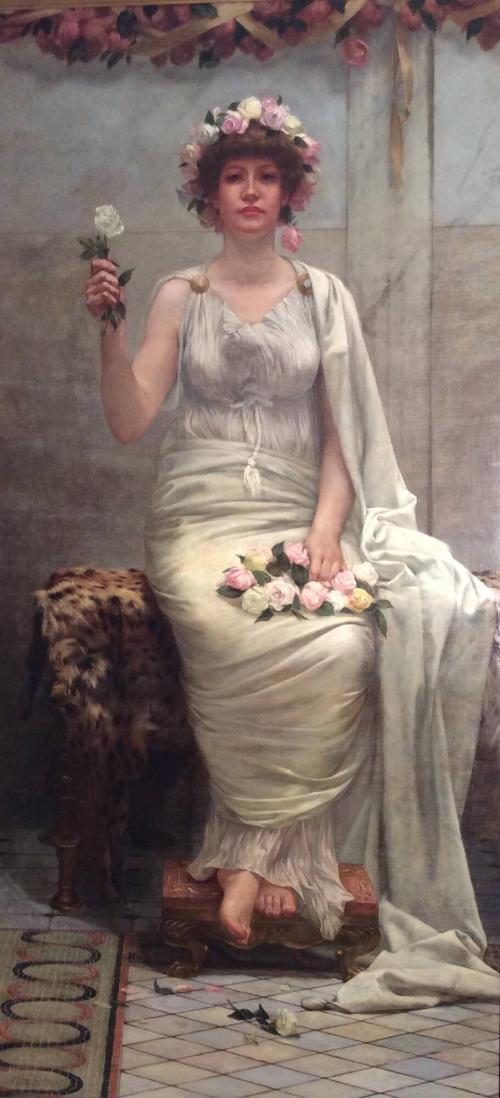
Regina Convivii or Queen of the Feast
Date: 1884
Dimensions: Height: cm (60.25 in.), Width: cm (28 7/8 in.)
Medium: Painting – oil on canvas
Owner/Location: National Academy of Design, New York, NY
Description
The painting is Inscribed lower left: F. D.
Although Millet painted works of classical genre into the late 1890s, his years of greatest activity in this mode were the mid-1880s. Beginning with “Reading the Story of Oenone,” shown at the Academy in 1883, he demonstrated his interest in painstaking recreation of classical drapery and decor. His friend, Lawrence Alma-Tadema, was a major influence at the time. The following year, Millet sent “Regina Convivii” to the Academy’s Annual with a price of $1500. Critical notice was favorable and extensive.
In the Art Interchange and the New York Sun, the painting was praised for its fine drawing, subtle color, and simplicity of subject. The Sun went so far as to call it “the most brilliantly decorative picture of its class that has been seen in the Academy.” Others found this very quality to be the most troublesome. The critic for the New York Daily Tribune hoped in the future “to see less absorption in color and more human interest in Mr. Millet’s work.” An opposing view was advanced in the New York Evening Post where “Regina Convivii” prompted a lengthy aside criticizing the “archaeological” methods of Alma-Tadema as false and misleading. So long as Millet avoided everyday classical incident and events, the writer warned, he would remain true to the Greek ideal. Any attempt to recreate actual antique life, however, would destroy that lofty atmosphere.
Millet’s figure, iconically clutching a white rose like a heavy sceptor, was identified in the press as the Goddess of Silence. Her clothing, throne, flowers, and surroundings are meticulously delineated with an eye toward pattern and texture. Her complacent, even banal, manner and expression perhaps fueled the critical debate about idealism and quotidian life. Trudy Baltz, in her discussion of the confluence of American allegorical art and the taste for theatrical pageants, commented, “Millet’s Queen, far from being an idealized conception, looks very much like a Gilded Age matron, dumpy and a little bored, dressed up in costume.”
Exhibitions / Provenance
Exhibitions:
Provenance:
Presented to the Academy as a part of Millet’s diploma presentation, March 15, 1886
Literature
Research:
Publications:
